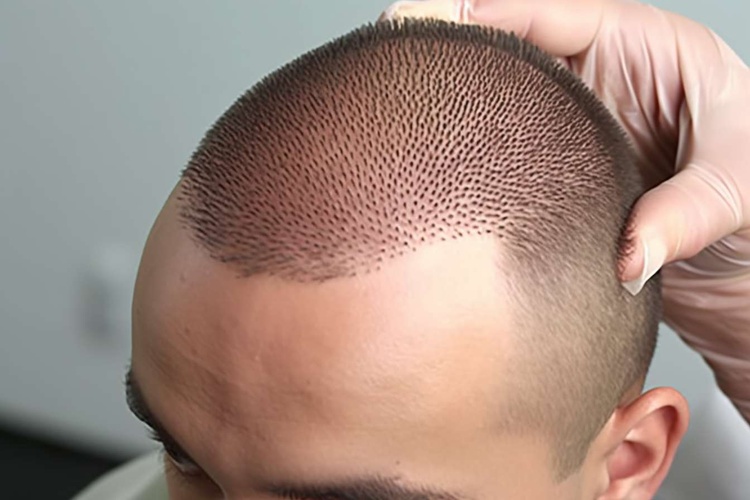Psoriasis on the Scalp: What It Is, What Causes It, and How to Treat It
Scalp psoriasis affects millions of people worldwide, causing red, scaly patches on the scalp that can extend beyond the hairline. This chronic autoimmune condition differs significantly from common dandruff and requires specific treatment approaches. Understanding the appearance, causes, and available management options helps individuals recognize symptoms early and seek appropriate care. While scalp psoriasis cannot be cured, various treatments can effectively control symptoms and improve quality of life.

What Does Scalp Psoriasis Look Like?
Scalp psoriasis presents as raised, reddish patches covered with thick, silvery-white scales. These plaques typically appear well-defined with clear borders, distinguishing them from other scalp conditions. The scales often flake off, resembling severe dandruff, but tend to be thicker and more adherent to the scalp surface.
The condition can range from mild, with fine scaling across the entire scalp, to severe, with thick, crusted plaques covering large areas. Some individuals develop psoriasis patches that extend beyond the hairline onto the forehead, neck, and around the ears. Hair loss may occur in affected areas, though this is usually temporary and hair typically regrows once the condition is controlled.
The Difference Between Psoriasis and Dandruff
Understanding the distinction between scalp psoriasis and dandruff helps ensure proper treatment. Dandruff typically produces fine, white or yellow flakes that easily brush away from the scalp. The underlying skin may appear slightly pink but rarely shows the thick, raised plaques characteristic of psoriasis.
Psoriasis scales are generally thicker, more silvery in appearance, and more difficult to remove. The underlying skin shows distinct redness and inflammation, often extending beyond the hairline. Dandruff rarely causes the intense itching associated with psoriasis, and it doesn’t typically result in the well-defined, raised patches seen in psoriatic conditions.
Why Picking at Psoriasis Patches Is a Bad Idea
Picking, scratching, or forcibly removing psoriasis scales can worsen the condition through a phenomenon called the Koebner response. This reaction causes new psoriasis lesions to develop at sites of skin trauma, potentially spreading the condition to previously unaffected areas.
Aggressive picking can also lead to bacterial infections, permanent scarring, and temporary hair loss. The trauma from scratching may cause bleeding and create open wounds that take longer to heal. Instead of picking, gentle care with appropriate medicated shampoos and treatments helps manage scales more effectively while protecting the scalp from further damage.
What Causes Scalp Psoriasis?
Scalp psoriasis results from an overactive immune system that accelerates skin cell production. In healthy individuals, skin cells mature over approximately 28 days. With psoriasis, this process speeds up to just 3-4 days, causing cells to accumulate on the surface and form the characteristic scales and plaques.
Genetic factors play a significant role, with approximately one-third of individuals having a family history of psoriasis. Environmental triggers can initiate or worsen symptoms, including stress, infections, certain medications, weather changes, and scalp injuries. Hormonal changes, excessive alcohol consumption, and smoking may also contribute to flare-ups in susceptible individuals.
Treatment and Management Options
Multiple treatment approaches exist for managing scalp psoriasis, ranging from over-the-counter options to prescription medications. Medicated shampoos containing coal tar, salicylic acid, or selenium sulfide can help reduce scaling and inflammation for mild cases. These products require consistent use and may take several weeks to show improvement.
Topical corticosteroids represent the most commonly prescribed treatment for scalp psoriasis. Available as solutions, foams, and shampoos, these medications reduce inflammation and slow skin cell production. Vitamin D analogues, such as calcipotriene, offer an alternative for long-term management with fewer side effects than steroids.
For moderate to severe cases, healthcare providers may recommend phototherapy using ultraviolet light, systemic medications like methotrexate or biologics, or combination therapies. Newer biologic medications target specific immune system components involved in psoriasis development, offering effective options for individuals who don’t respond to traditional treatments.
| Treatment Type | Provider/Brand | Cost Estimation |
|---|---|---|
| Medicated Shampoos | Neutrogena T/Gel, Selsun Blue | $8-25 per bottle |
| Prescription Topical Steroids | Generic/Brand name options | $30-150 per tube |
| Biologic Medications | Humira, Cosentyx, Taltz | $5,000-8,000 monthly |
| Phototherapy Sessions | Dermatology clinics | $75-200 per session |
Prices, rates, or cost estimates mentioned in this article are based on the latest available information but may change over time. Independent research is advised before making financial decisions.
Successful scalp psoriasis management often requires patience and persistence, as finding the right treatment combination may take time. Regular follow-up with healthcare providers ensures optimal treatment adjustments and monitoring for potential side effects. With proper care and treatment adherence, most individuals with scalp psoriasis can achieve significant symptom improvement and maintain healthy scalp conditions long-term.
This article is for informational purposes only and should not be considered medical advice. Please consult a qualified healthcare professional for personalized guidance and treatment.




